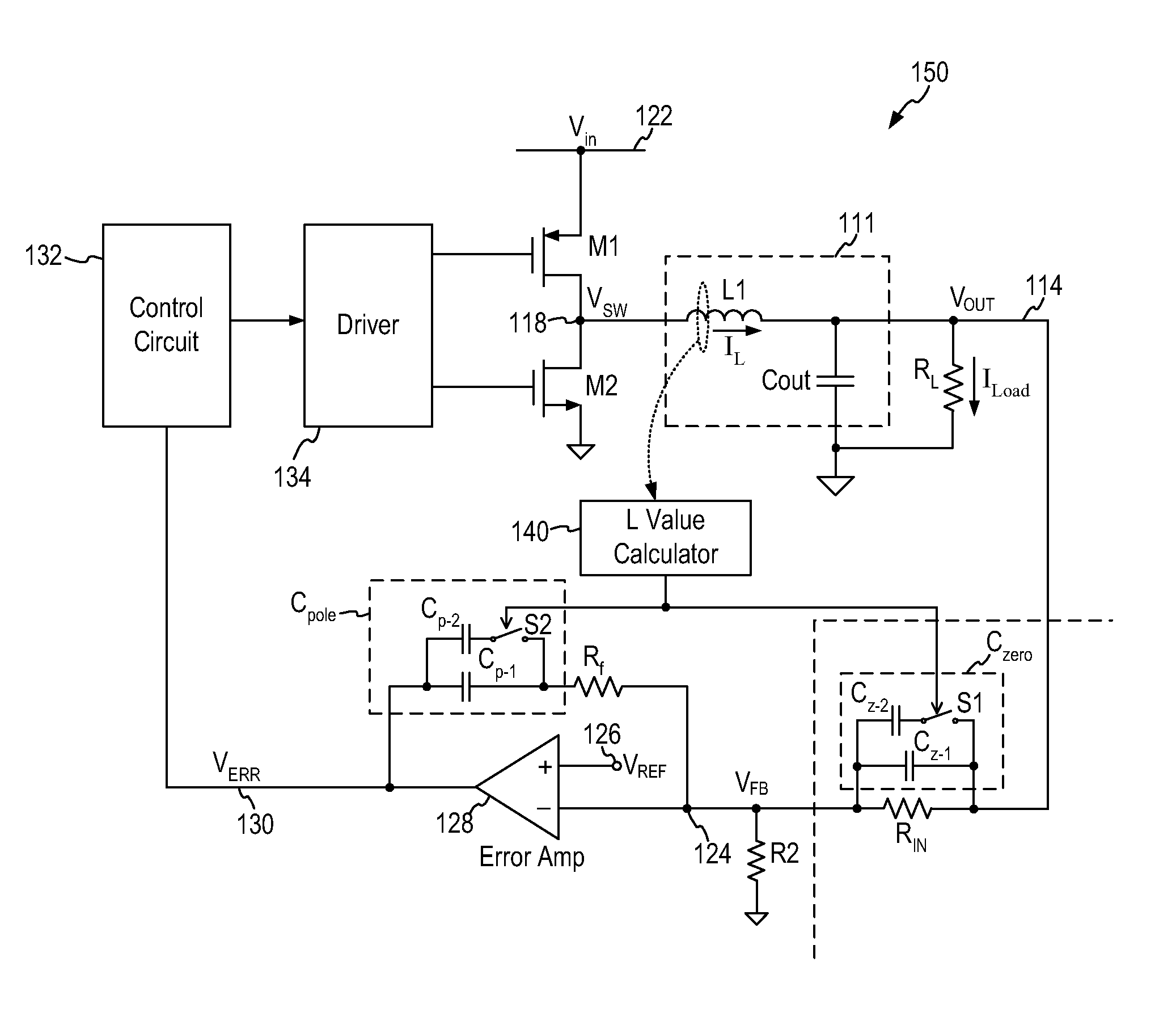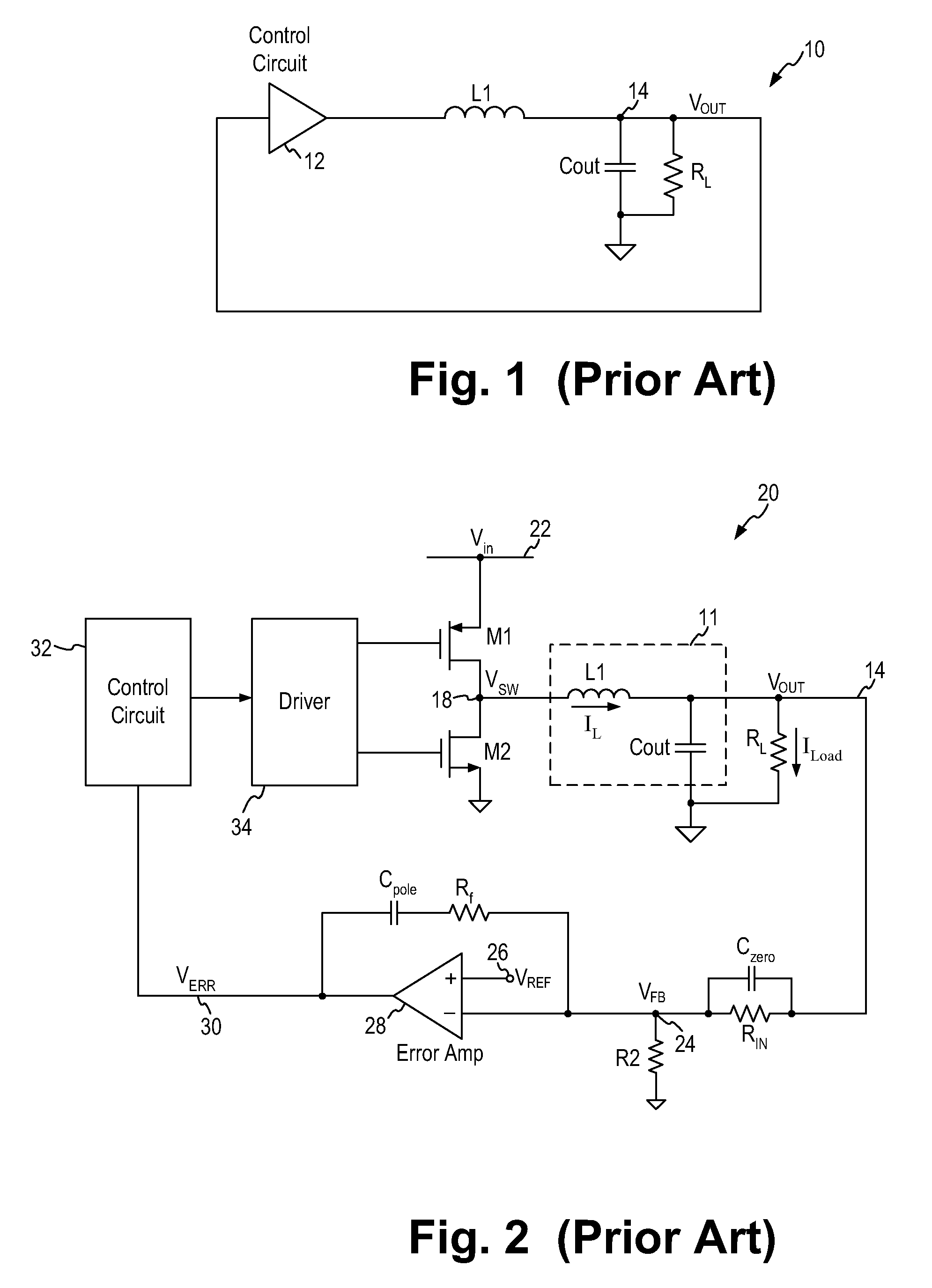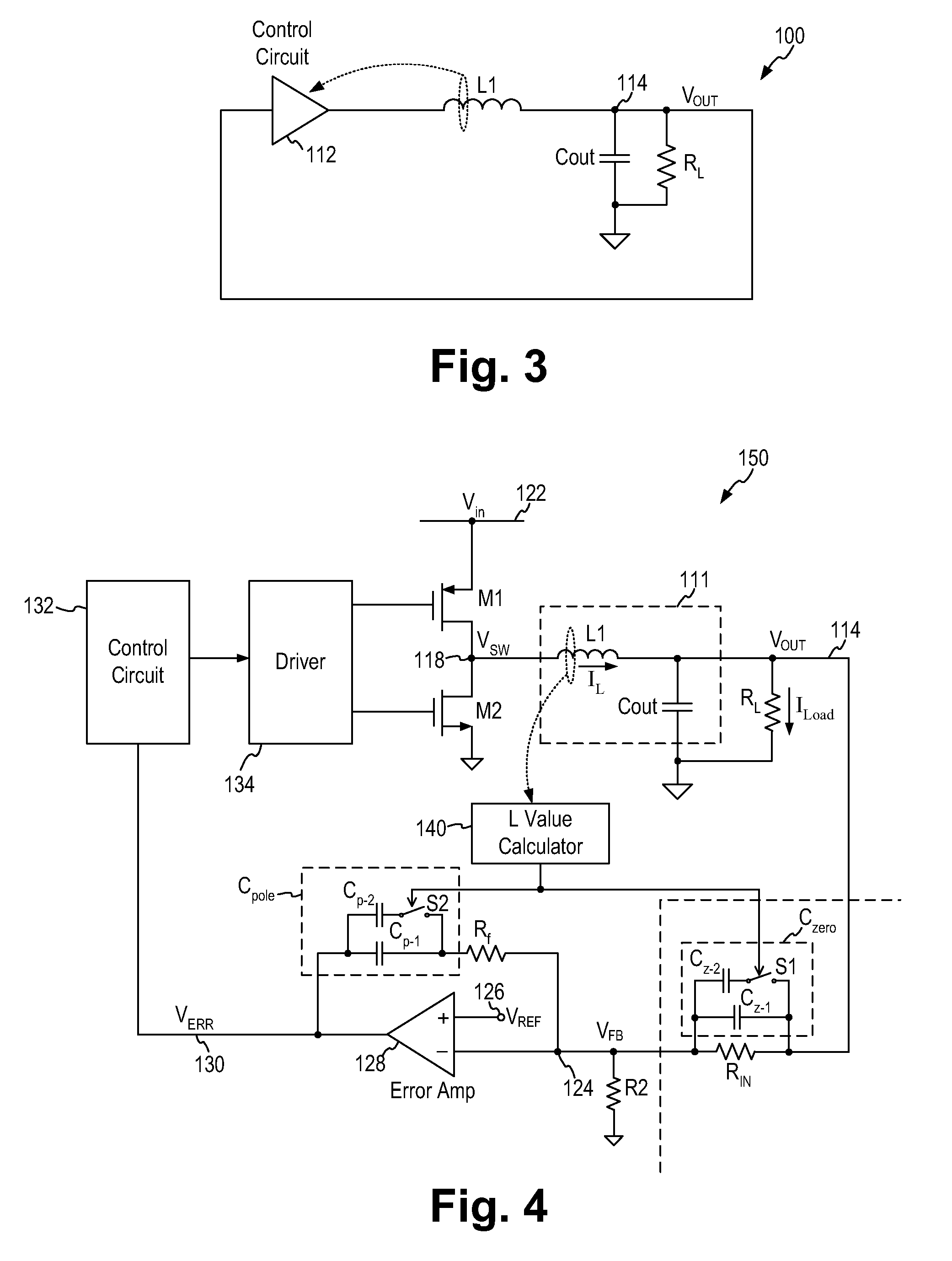Adaptive Compensation Scheme for LC Circuits In Feedback Loops
a linear integrated circuit and feedback loop technology, applied in the direction of dc-dc conversion, power conversion systems, instruments, etc., can solve the problems of limiting the gain loss that is capable of being achieved, affecting the output voltage, and affecting the operation of the circui
- Summary
- Abstract
- Description
- Claims
- Application Information
AI Technical Summary
Benefits of technology
Problems solved by technology
Method used
Image
Examples
Embodiment Construction
[0028]In accordance with the principles of the present invention, an electrical circuit including an inductor-capacitor (LC) filter circuit as a filter circuit connected in a feedback loop incorporates an adaptive compensation circuit providing compensation based on the inductance value of the LC circuit. More specifically, the adaptive compensation circuit senses the inductance value of the LC circuit and adjusts the compensation capacitance accordingly to provide effective pole cancellation and zero compensation for feedback loop stability.
[0029]FIG. 3 is a representative circuit diagram of an electrical circuit including an LC circuit in a feedback loop and incorporating the adaptive compensation scheme according to one embodiment of the present invention. Referring to FIG. 3, an electrical circuit 100 includes an LC circuit (inductor L1 and capacitor Cout) for filtering the output signal from a control circuit 112. The output voltage VOUT is used to drive a load represented by l...
PUM
 Login to View More
Login to View More Abstract
Description
Claims
Application Information
 Login to View More
Login to View More - R&D
- Intellectual Property
- Life Sciences
- Materials
- Tech Scout
- Unparalleled Data Quality
- Higher Quality Content
- 60% Fewer Hallucinations
Browse by: Latest US Patents, China's latest patents, Technical Efficacy Thesaurus, Application Domain, Technology Topic, Popular Technical Reports.
© 2025 PatSnap. All rights reserved.Legal|Privacy policy|Modern Slavery Act Transparency Statement|Sitemap|About US| Contact US: help@patsnap.com



